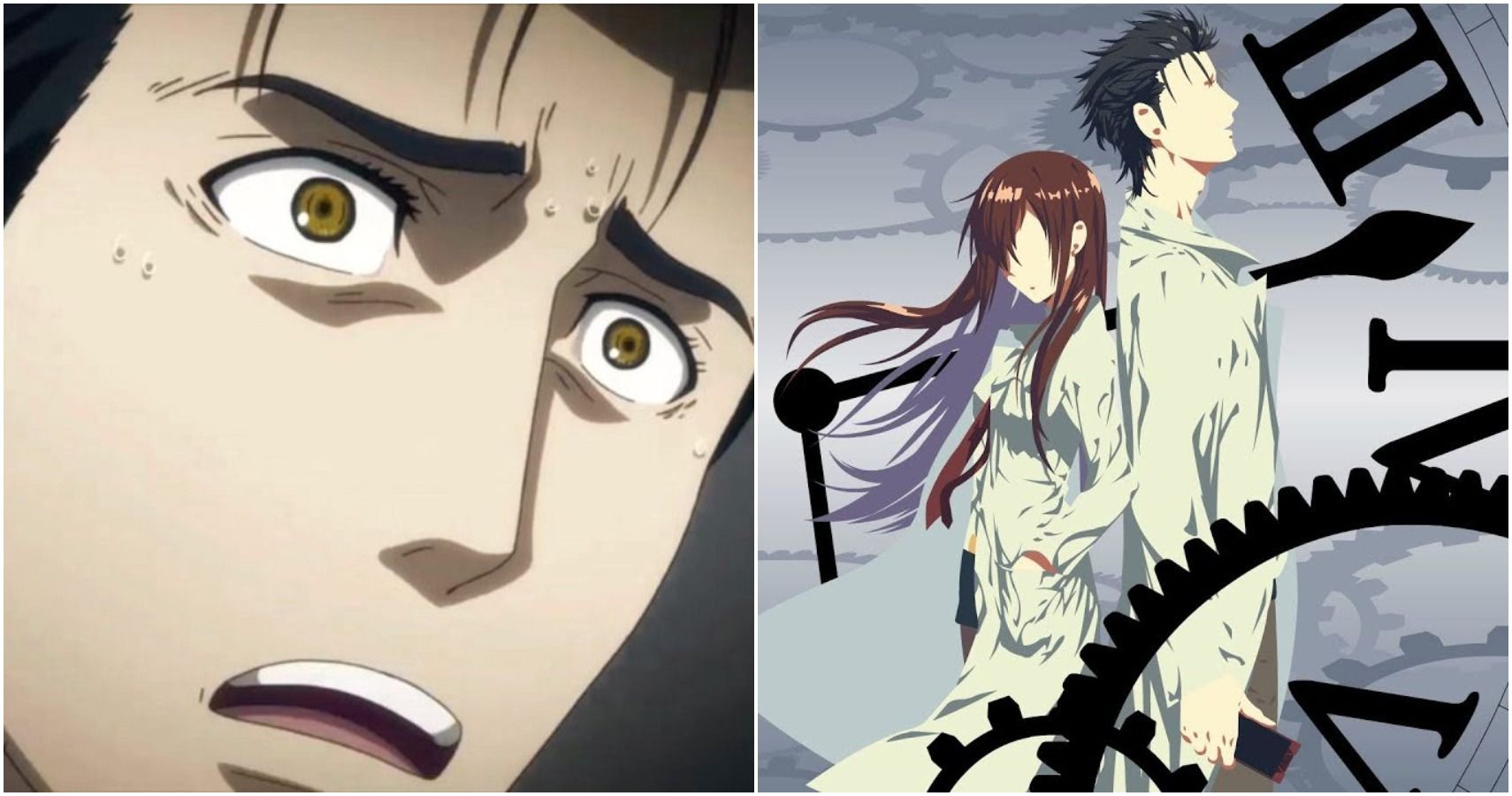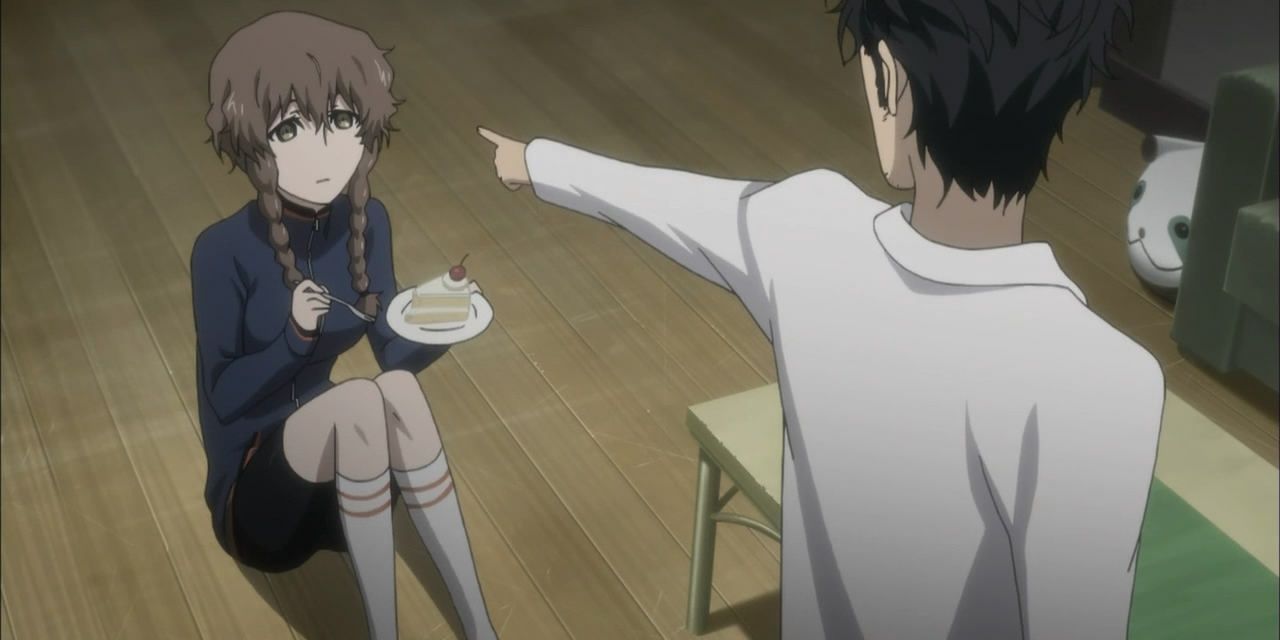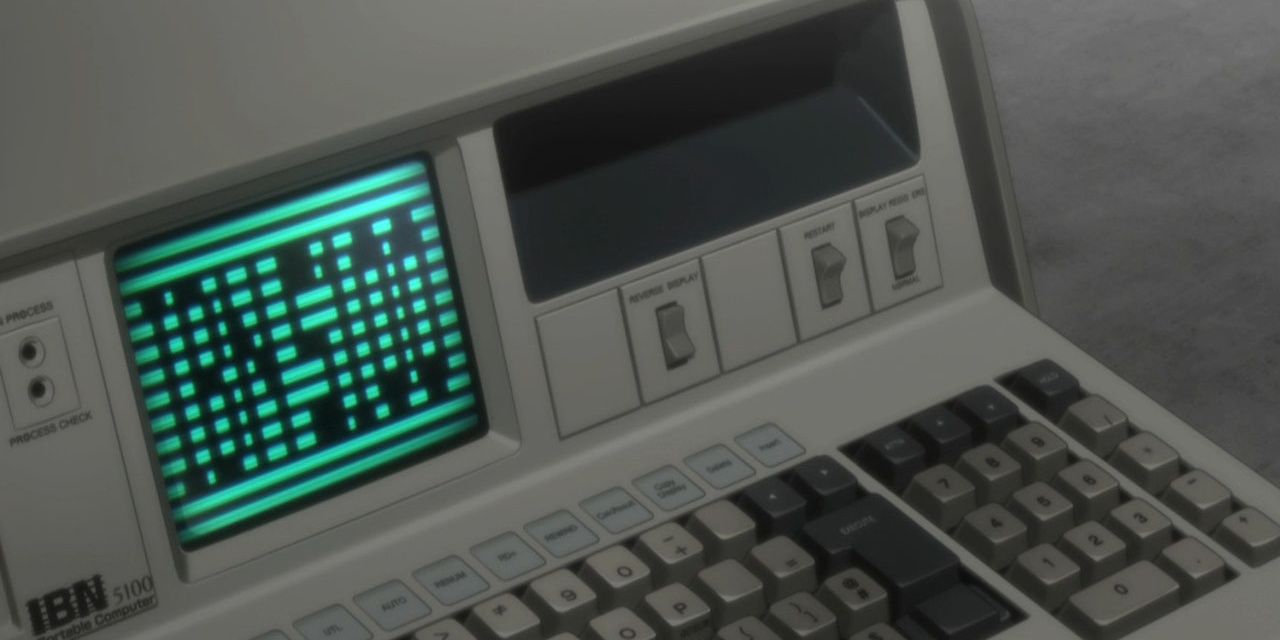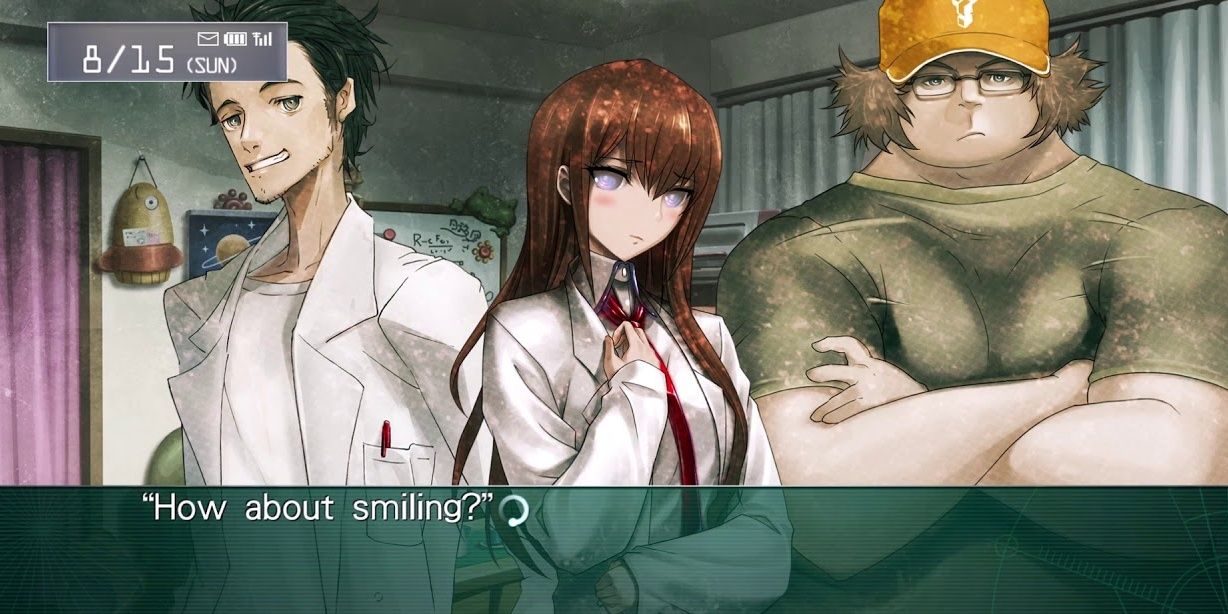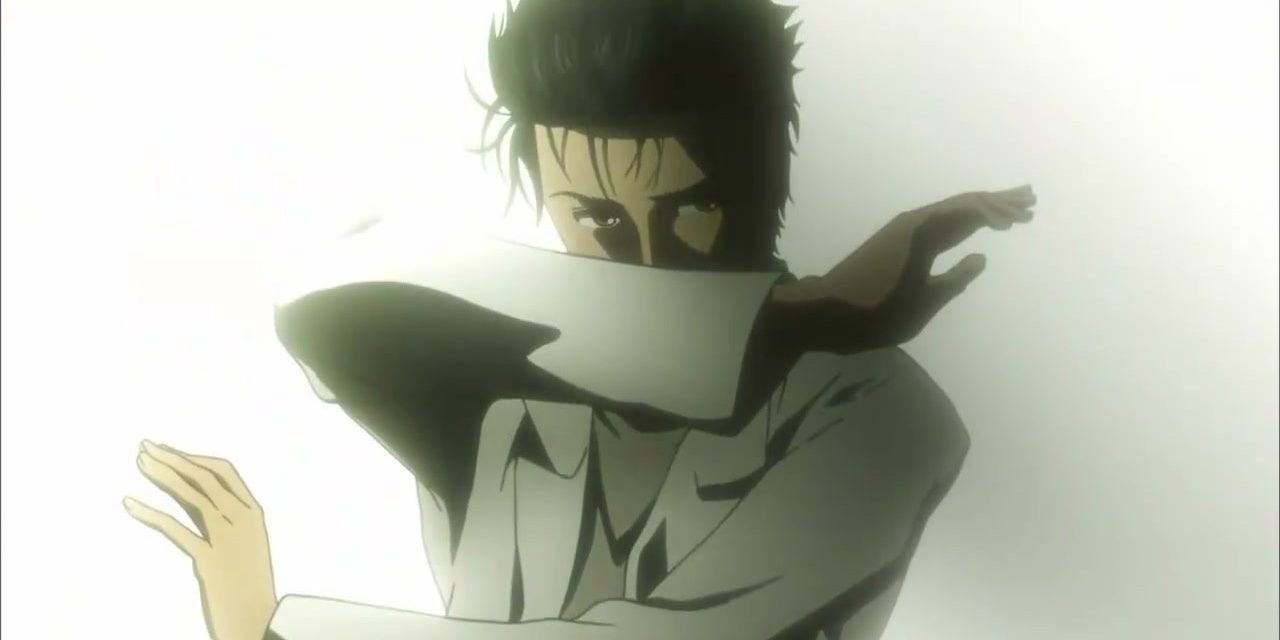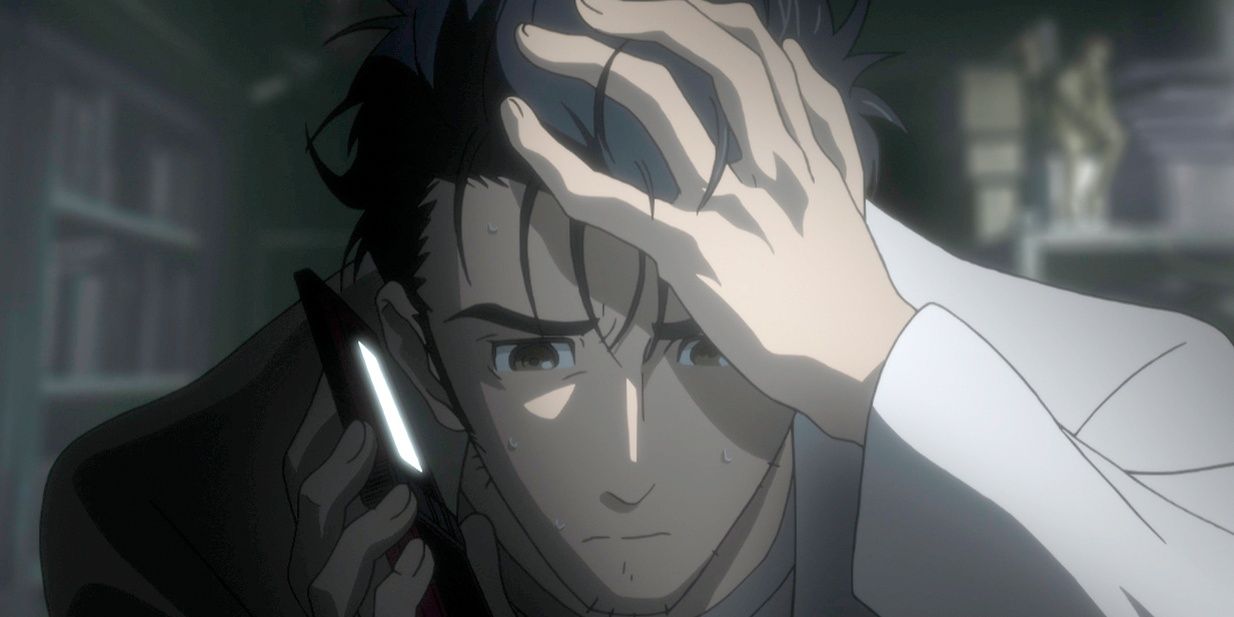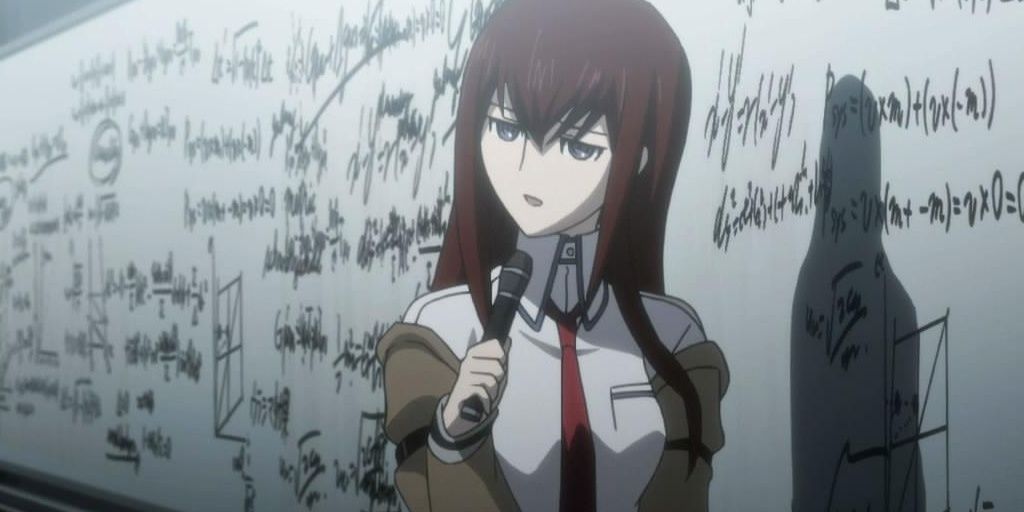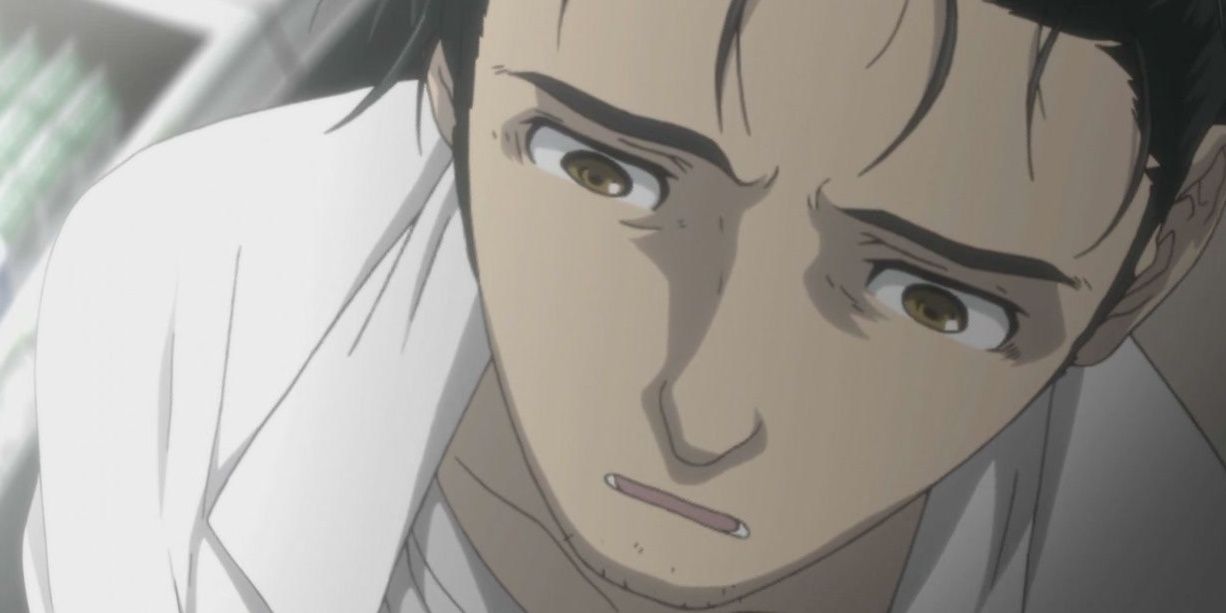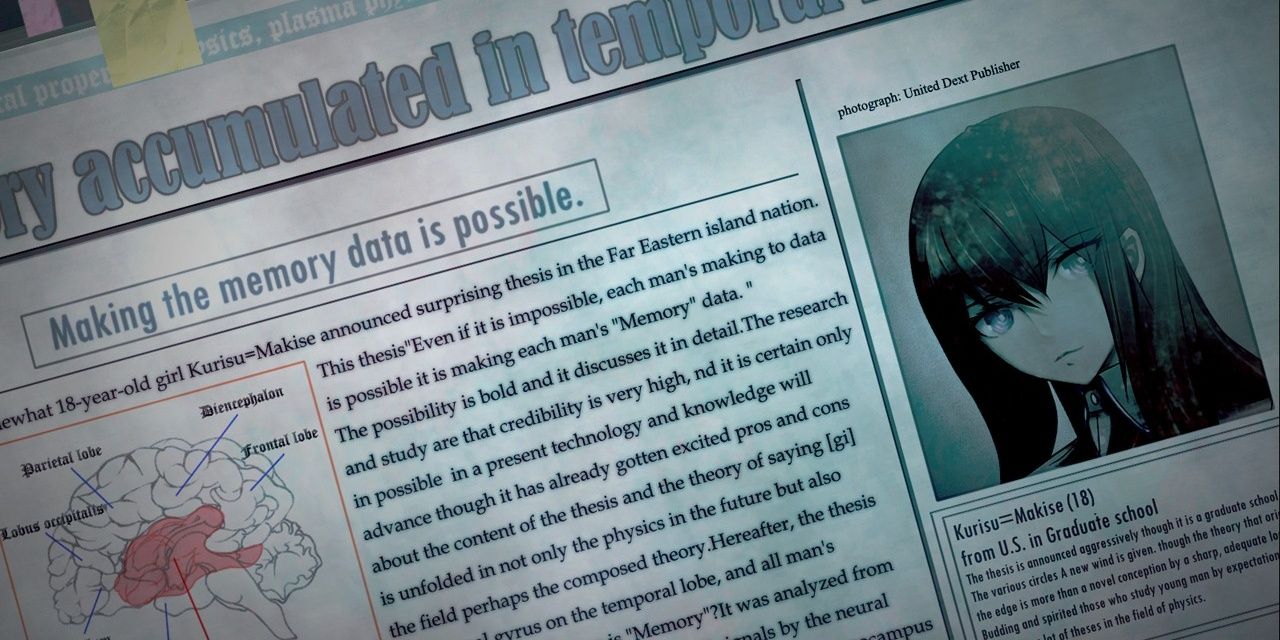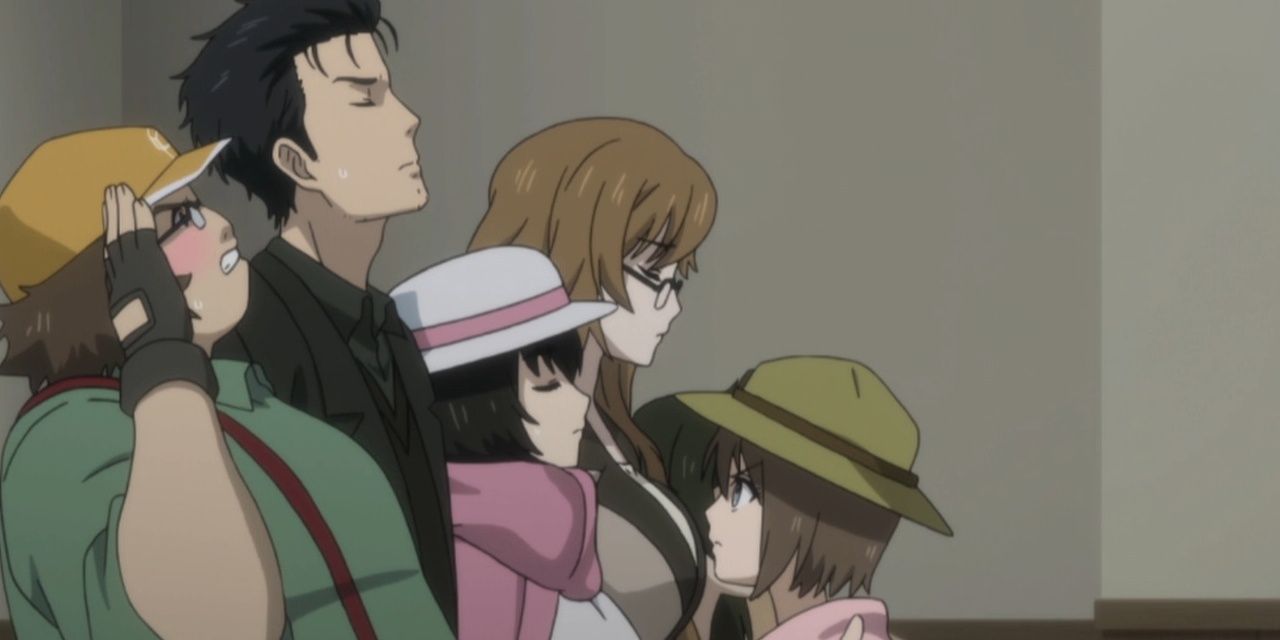In Steins; Gate the eccentric student Rintaro Okabe accidentally emails himself a week into his past with his wacky microwave-o-phone invention. Time-travel experiments ensue. The 25-episode anime was a classic in 2011, and there's an abundance of trivia to emphasize the anime’s lasting quality.
The story’s adventures in quantum mechanics led Okabe and his lab of misfits down a rabbit hole of discoveries, conundrums, moral quandaries, and sacrifices in their quests. What follows is some insight into the details you never knew.
10 For Nerd Eyes Only
The series has several nods to things that only the geek or the geek-adjacent would understand in that there are inside-jokes specific to niche elements of pop culture. This is most apparent in the dialogue. For instance, when scientist/lab member Mikase Kurisu gets outed as a nerd-girl for her knowledge of 2channel memes. Okabe sets up an "@channel" joke to which Kurisu reflexively completes the punchline and embarrasses herself (@channel is a parody of the Japanese 2ch network). Later, arguing with another character, Okabe shouts "Your victory was a deus ex machina, ergo the cake is a lie” which happens to be a winking Portal reference.
In another episode, the team is trying to devise a name for their time traveling emails. Some of them suggest “Back to the Email” and “Delorian-Mail,” which both reference the famous Back To The Future franchise.
Finally, Okabe’s “future gadget” inventions are all nods to film and gaming lore. His Future Gadget #4 is a smoke-bomb humidifier that looks like a claymore mine and is named Moad Snake, clearly inspired by the Metal Gear Solid: Rising game. Future Gadget #8, the Cyalume Saber, looks exactly like a lightsaber from Star Wars.
9 IRL Accuracy
With its sci-fi premise, Steins; Gate is easy to dismiss as a complete fiction, yet this series is meticulously well-researched. The entire character and subplot of a man named John Titor is based on the true online personality that popularized forums in the year 2000 with its namesake. The real-life John Titor claimed to be from 2038 and sought a real retro IBM-5100 PC from 1975 as a means to save his future, just like in this show. Steins; Gate calls it an IBN, though.
The show has referenced other technologies, theories, and institutions as well. SERN is the anime equivalent of CERN which does possess the Large Hadron Collider. CERN discusses its potential to create black holes that would facilitate dimensional travel on their website.
Moreover, Dr. Nakabashi, the scientist from the first episode, happens to bear a resemblance to Dr. Yoshiro Nakatmatsu, a Japanese inventor known for having thousands of patents.
8 Based On A Video Novel
This anime series is actually its third incarnation. It was originally an acclaimed video novel before it was quickly adapted into a manga, with each adaptation coming within a year or so of its preceding iteration. With this rich content to work from, the anime series was completely filler-free for its entire run. The video novel is helpful as a source for further trivia and references unique to the characters and their universe. With playthroughs available for viewing online, it's easy to take a deep-dive.
7 Nicknames and Code Names
Okabe has nicknames for everyone. These function as comic relief, but also end up acting like everyone's code names. What’s interesting is that Okabe insists on never being called by his real name. He demands that everyone address him as his mad scientist alter-ego Hououin Kyouma.
Some of the nicknames include "Christina" for Kurisu (which she hates), "Shining Finger" for Moeka Kiryuu (because she types faster than she talks), "Part-Time Soldier" for Suzuha Amana (a violent shop employee), "Daru" for Hashida Itaru, and more. Speaking of codenames, you might have missed that all of their mission titles reference Norse Mythology, another one of Okabe's odd naming conventions.
6 Social Anxiety Themes
Often, anime characters tend to be superficial archetypes, but Okabe’s mad-scientist, conspiracy theorist quirks intermittently hint at things like autism, paranoia, and schizophrenia, and not necessarily for laughs. The latter half of the series raises the stakes by introducing suspense-thriller elements to the story. Okabe has a breakdown that exposes his alter-ego of Hououin Kyouma as the mask of insecurities it is. Like cracking a bully’s self-hate, it reveals his character to be more than just a wacky personality.
The same goes for his trans friend, Rukako, who has more than one episode addressing the stresses stemming from her desire to be biologically female. In both cases, these characters have serious depths that are easy to miss if for viewers who only watch the early episodes.
5 Akihabara Culture
Since its video novel format, it's of interest to observe how realistic the scenery of the very real city of Akihabara is, down to the replicated landmarks and signage. Steins; Gate injects accurate views of the city and its events mostly through Faris, a socialite whose late father left her the opportunity to endow his properties with cultural appeal.
Her influence brings things like cosplay conferences, maid-cafes, and Rai-Net board game tournaments to town. Without Faris, this town would be a humble electronics hub and useless to hobbyists. This is shown in an episode where she uses the time machine to resurrect her father, whose company then erases her influence.
4 No Paradoxes
Steins; Gate is detailed enough to be almost entirely paradox free, save for its somewhat convoluted ending. There is no grandfather paradox because it embraces multiverse theory, and with team Kyouma’s time-leap invention, they avoid having characters in multiple places at once.
The trick is in transported memories instead of moving physical bodies. Due to this level of logical detail, there are very few implausibilities in Steins; Gate, down to their old tube TV handling cathode electrons, or hacking into SERN's network for additional resources. Even Okabe's ability to remember altered timelines is explained away by the superpower he calls the "Reading Steiner."
3 Philosophies At Play
Shrouded in the more emotional arcs are some serious musings on fatalism versus personal agency. This plays out as Okabe has to face the repercussions of his actions. With time travel, entertainment tends to go one of two routes: predestination, sending the character in a loop to which he only has the teased illusion of control, or its opposite, where he has full control and wreaks havoc on a single timeline.
Steins; Gate successfully explores both avenues by using technobabble and exposition to explain how and why. It introduces the Attractor Field concept, which illustrates how there are some events one can’t change because they knot a set of timelines together. Meanwhile, an alternate, proverbially braided rope of timelines can lie parallel to these immutable conditions, attainable by crossing over to other universes.
2 Otaku Easter Eggs
There's a huge list of references for the weebs among Steins;Gate's fans. Kurisu quotes Yagami Light from Death Note (“This guy is hopeless, better do something about him quick”) and Kishibi from JoJo’s Bizarre Adventure (“But I refuse!”) with subtle nods to the viewer.
Also, they did nearly call the D-mail “The Mail that leapt through time” which is a clear tribute to “The Girl Who Leapt Through Time", a popular film. There are plenty of anime references throughout, from Pokemon to Code Geass, particularly if you watch the anime with its original Japanese audio.
1 There Are Sequels
Since its series and film follow-ups were released years later, there is a good chance you never knew that this classic 2011 show has sequels available to enjoy. Steins; Gate: The Movie takes place a year after the events of the anime. Steins; Gate 0, the 2018 series, has a plot that details a timeline of events unseen in the original anime as a companion piece. With a live-action adaptation on the horizon, this series is a gift that keeps on giving.

